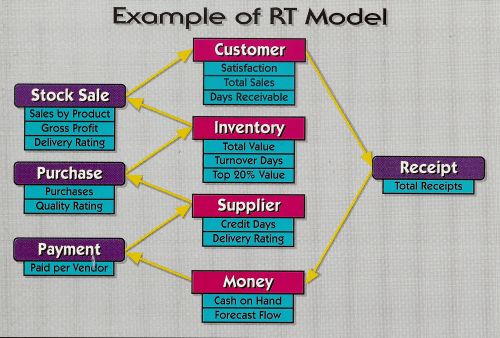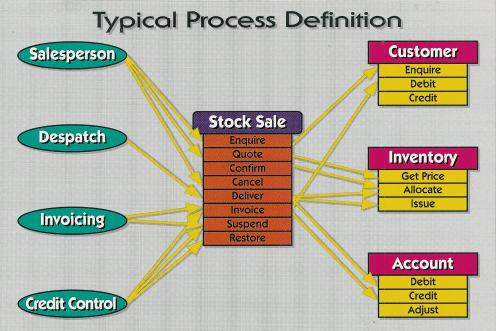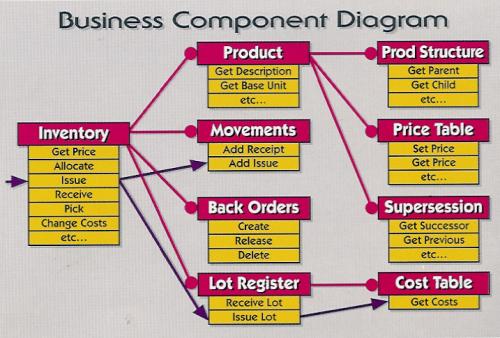|
Economic Value Added - central to strategic planning
|
|
In today's global business world you do not survive unless you add value. While this is universally recognised, the concept of value is not well understood, and very few make a serious attempt to define and quantify it. Economic value has two dimensions, profit and risk. The profit dimension is central to the financial accounting systems used to monitor and report performance, but risk is rarely quantified and managed with the same discipline. This sometimes leads to irrational decisions that focus entirely on profit without taking proper account of the associated risk. An organisation exists to create value, typically through products or services, using a number of resources such as personnel, materials and money. External resources such as markets, suppliers, contractors and government bodies are also used in achieving these goal. The primary role of management is to allocate and control available resources in order to maximise value, which is recognised in the Economic Value Added (EVA) method of measuring the value of an enterprise.
|
|
RASCAL's methodology maximises Economic Value Added (EVA)
|
|
Rascal's resource transform methodology creates a formal model of an enterprise in terms of it's resources, which have value, and the processes by which these resources are created and used. Each resource has at least one measure of value comprising profit and risk elements. Each process represents a set of closely related activites designed to add value to a resource, which in turn requires other resources. For example, a manufacturing process might create a product using materials, personnel, equipment and tooling. Similarly, a vehicle service process reduces the risk of breakdown, again using materials, personnel equipment and tools. An actuary in an insurance company may add nothing to it's profitability in a narrow sense, but by properly managing it's risk profile, he will definitly add value. Indeed, it may be argued that if the value created by a process cannot be identified and quantified the process has no merit. RASCAL eliminates processes that do not add value, and improves the productivity of those that do.
|

|
|
Business Process Re-engineering - central to competitive advantage
|
|
An enterprise gains competitive advantage by differentiating itself from its competition through the processes by which it conducts its business. New technologies are continuously enabling enterprises to adapt and improve their business processes.
|
|
RASCAL provides a framework for Business Process Re-engineering
|
|
The primary goal of the RASCAL methodology is to fully understand how an enterprise should work in order to optimise its value. This requires a holistic approach, in which all aspects of the business are considered, in order to properly understand the relationship between its component parts. To focus on the existing organisation and methods is dangerous as these may well be obsolete in the rapidly changing marketplace. RASCAL avoids this by identifying the fundamental processes that create and consume resources, and which represent the core activities of the business. Fundamental processes add value to at least one output resource, which in turn will aid another process. RASCAL quantifies the benefits of a Business Process Re-engineering by measuring the increased value added to the output resources.
|
|
Workflow discipline - central to efficient operations
|
|
Each business process comprises of a set of closely related actions required to perform the process. A manufacturing process typically has a series of operations to be done in a particular order with little flexibility. A marketing process, however, is likely to be less structured, allowing work to be done in random sequence or concurrently, with minimal contraints between the actions. Well defined workflows ensure a smooth flow of information within the enterprise resulting in efficient operations.
|
|
RASCAL implements customized workflow systems
|
|
RASCAL can define flexible workflow, ranging from a simple transaction to a complex network of activities. Each action in a process is atomic, which means that it is either done or not done. This enables real world events to be scheduled and tracked with absolute integrity by the information system, and for business rules and policies to be defined with precision. For examlpe, changing the due date of a sales order immediatly reschedules the relevant actions and resources without further processing. Online transaction processing (OLTP) with full rollback and commit disciplines is enabled by the RASCAL transaction monitor using modern database technology.
|

|
|
Knowledgebase - central to rapid application development
|
|
The resources produced and used by an enterprise are much the same as those of other enterprises. A vehicle, for example, retains the same characteristics whether it is used by a manufacturing company, a distribution chain, a financial institution, or a private individual. The same is true of other resources such as materials, money, personnel and equipment. The business knowledge about these resources forms the basis for a comprehensive knowledgebase.
|
|
RASCAL's application repository contains decades of business knowledge
|
|
RASCAL has acquired an in-depth understanding of the characteristics of resources produced and used by enterprises through many man-years of designing and implementing business systems. This has been recognised as an opportunity to create software components, known as business objects, that may be reused in many different applications with little or no change. Business objects also enable the detailed knowledge gained from many different applications to be abstracted and retained for use by others. For example, costing and accounting rules are incorporated into each object, so need not be rewritten for each new process that uses the object.
|
|
Object Technology - central to quality informations systems
|
|
Object technology provides the means by which business objects can be created, and is quite clearly recognised as the only way to manage the increasingly complex systems demanded by leading companies.
|
|
RASCAL offers the best of object technology
|
|
RASCAL implements business objects as assemblies of other more specific objects. For example, a product object contains other objects for technical specification and structure, for inventory and lot management, for forward and back order control and for pricing and costing. This complexity is hidden behind a high level interface in much the same way as the complexity of an integrated circuit is hidden behind its connecting pins. Options enable the behaviour of the object to be modified without understanding, let alone changing, its internal design. Reusing a business object in a new process is much like reconnecting a standard machine to perform a new function. RASCAL's business objects are therefore services available to business processes, and are typically implemented as servers in an information system. Their design is ideally suited to distribution around a network.
|
|
Business rules - central to policy and control
|
|
Expert knowledge applied in decision making is invariably dependent on key individuals in an enterprise. This may render an enterprise vulnerable to inconsistent policy and control, and to the risk of losing critical expertise.
|
|
RASCAL makes expert systems practical
|
|
RASCAL business objects may have an unlimited number of properties and business rules. This is used to define automated decision making for such applications as product selection, machine routing, complex payrolls and risk analysis. Properties and rules may be changed without reprogramming which is an ideal way to formalise the knowledge of experts.
|

|

|
|
Online management information - central to decision making
|
|
The emphasis in recent years has been on database technology and transaction processing to get data into an information system. The large volume of data typical of an integrated system is useless unless it can be extracted, summarised and presented in a suitable form for users, especially executive management. Relational query facilities such as SQL are not well suited to this task because of the quantity and structure of data in a typical OLTP (OnLine Transaction Processing) database.
|
|
RASCAL ensures easy access to up to date management information
|
|
RASCAL resolves the problem of easy access to information by providing an informatin warehouse that uses multidimensional database technology to summarise transaction data in near real time. A multidimensional warehouse may be thought of as a spreadsheet with more than two dimensions in which summarised data is stored. For example, if the central branch of a bicycle distibutor sold 250 mountain bikes during September, then central, mountain bike and September could be summarised data within the region, product and times period dimensions. The most common dimensions for business enterprises are geographic locations, organisational structures, time periods, and performance measures such as sales, profit and working capital levels.
|
|
Drill-down enquiry - central to understanding business performance
|
|
Summarised management information will reflect trends and variations in business performance. The underlying business transactions often need to be interrogated to pinpoint the reason for these trends and variations. Drill-down enquiry is the most effective way to interrogate management information.
|
|
RASCAL builds information hierachies for Drill-down enquiry
|
|
RASCAL posts data to low level items in its information warehouse as transactions occur using standerd rollback/commit techniques. This ensures that the information warehouse is consistant with the transaction database. The low level data is summarised according to the hierachy of items in each dimension by a low priority background task that typically lags by no more than a few minutes behind the original transaction. The roll up is exhaustive to ensure that all possible views of the information are updated. A user may drill-down form this summary information to more detailed source data in real time, which is recognised as one of the most powerful tools availible to management to access meaningful information. The cliché "a picture is worth a thousand words" is never more true than for the presentation of quantitative data. RASCAL exchanges this data with standerd desktop graphical and analysis packages to enable the user to manipulate and present the information in the most effective way.
|
Buy the Enterprise modeling with UML book
|
|




